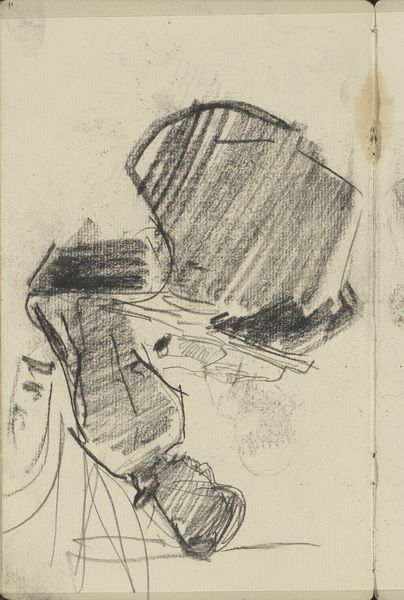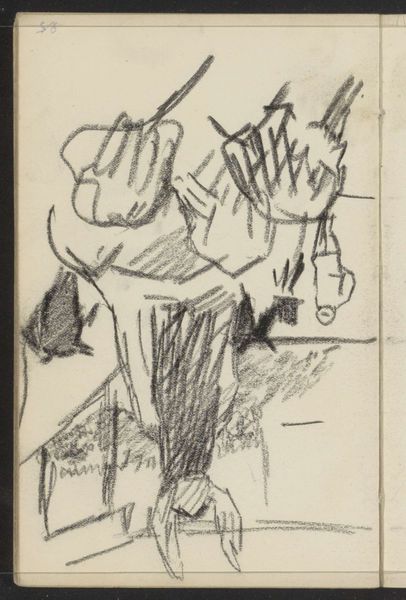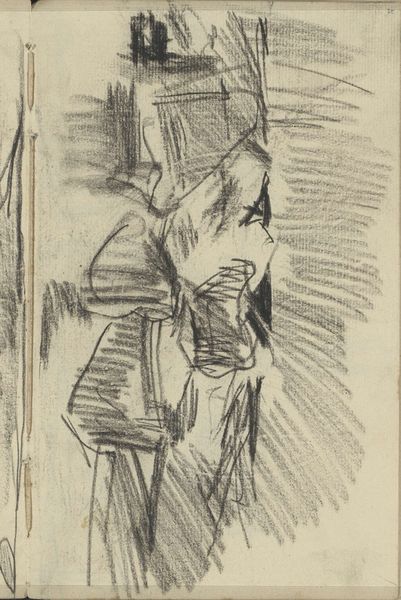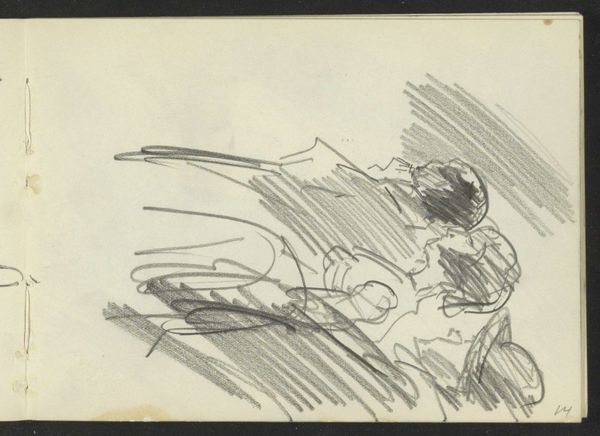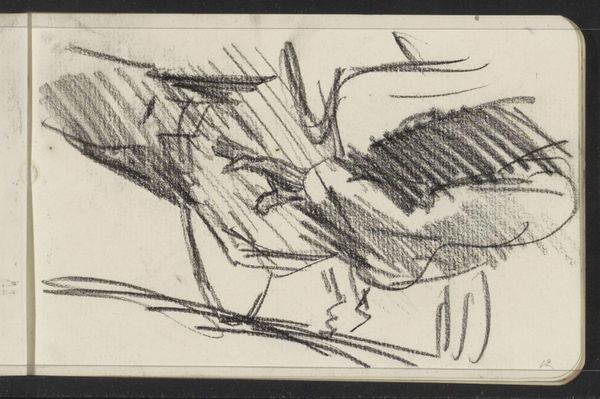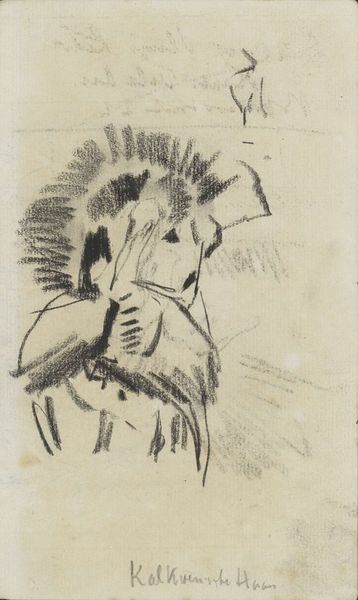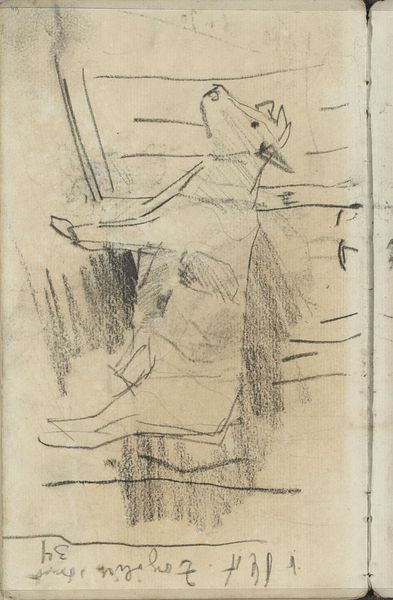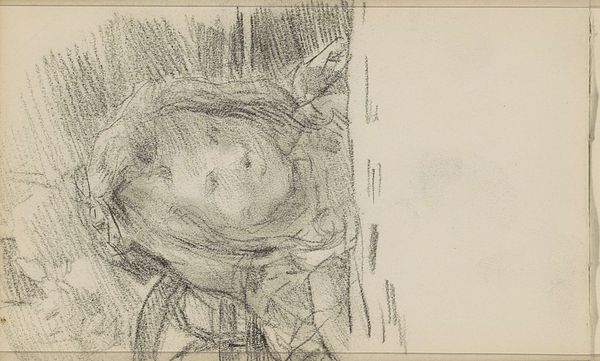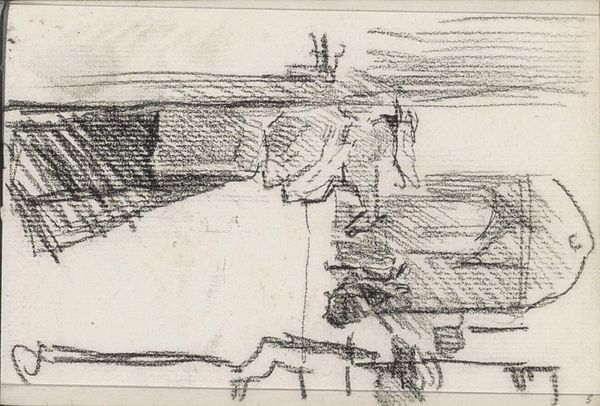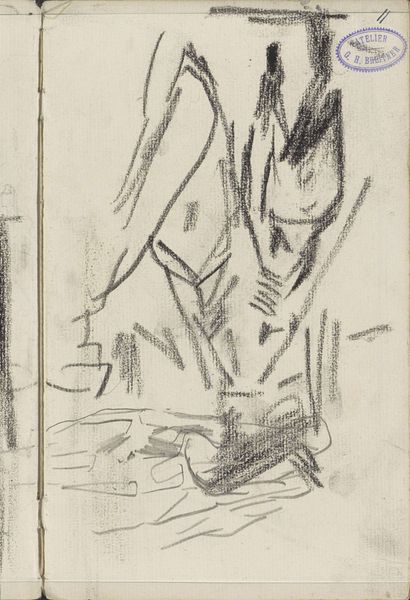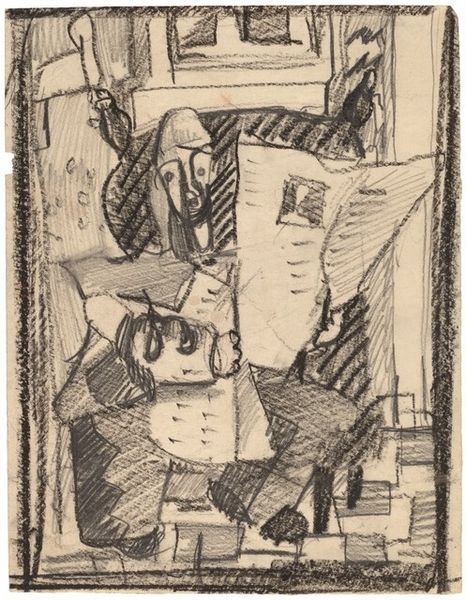
Schets van een vrouwenhoofd, in profiel naar rechts 1844
drawing, pencil
portrait
drawing
toned paper
quirky sketch
pen sketch
pencil sketch
old engraving style
personal sketchbook
romanticism
pen-ink sketch
pencil
pen work
sketchbook drawing
academic-art
sketchbook art
Dimensions: height 46 mm, width 63 mm
Copyright: Rijks Museum: Open Domain
Editor: This drawing, "Schets van een vrouwenhoofd, in profiel naar rechts" by Georgius Jacobus Johannes van Os, dates back to 1844. It’s a delicate pencil sketch on toned paper held at the Rijksmuseum. The woman's face is obscured by her bonnet, and it gives off an air of mystery. How do you interpret this work? Curator: It's interesting you pick up on the obscuration. I see this drawing as speaking to the social constraints placed upon women during the Romantic era. While seemingly a simple sketch, the turned profile, the bonnet—they all suggest a kind of enforced modesty and limited agency. The academic art style reinforces these boundaries. Editor: Enforced modesty? Can you elaborate on that? Curator: Consider the historical context: women’s identities were often closely tied to their domestic roles. Restricting how women are represented in the public imagination is a part of the control and expectations that women were under in that moment of history. Her concealed features can be seen as representative of that societal pressure, that suppression. It is interesting to see it in something as apparently benign as a quick sketch. What do you think about that date - 1844? Editor: That's true; I didn't really think about that aspect! It makes me consider her position as a woman in the 19th century much more deeply. Seeing it as part of an old sketchbook gives the image such intimate insight. Curator: Exactly. By engaging with historical contexts and feminist theory, even a seemingly simple sketch offers valuable commentary on issues of gender and power. It reminds us that art can be a lens through which we examine societal structures and their impact on individual lives. Editor: It really does. Now, I’m seeing it as so much more than just a portrait; it's a statement. I’ll never look at a portrait the same way again. Curator: And that’s the power of art, isn’t it? To make us question and to re-evaluate what we thought we knew.
Comments
No comments
Be the first to comment and join the conversation on the ultimate creative platform.
